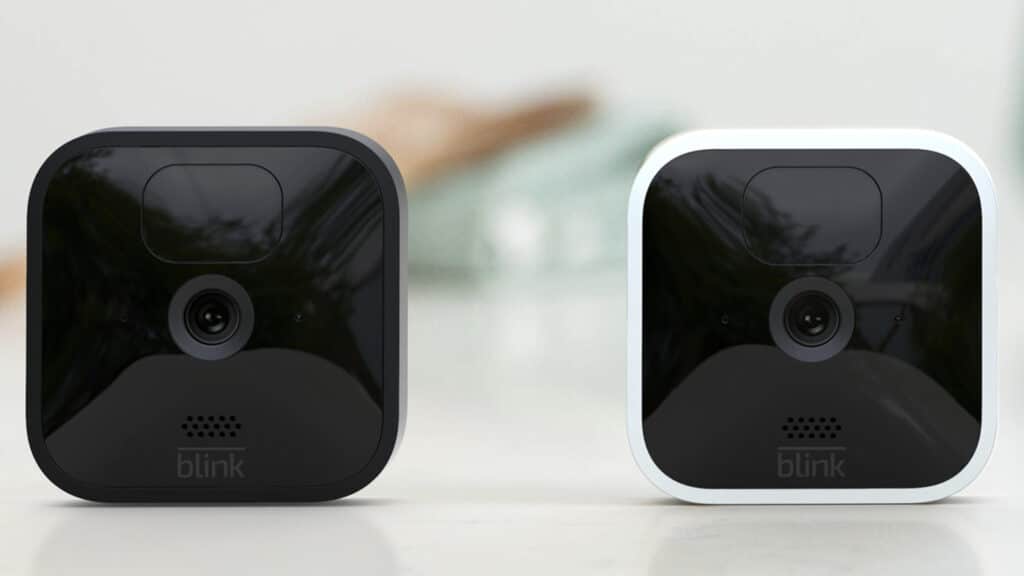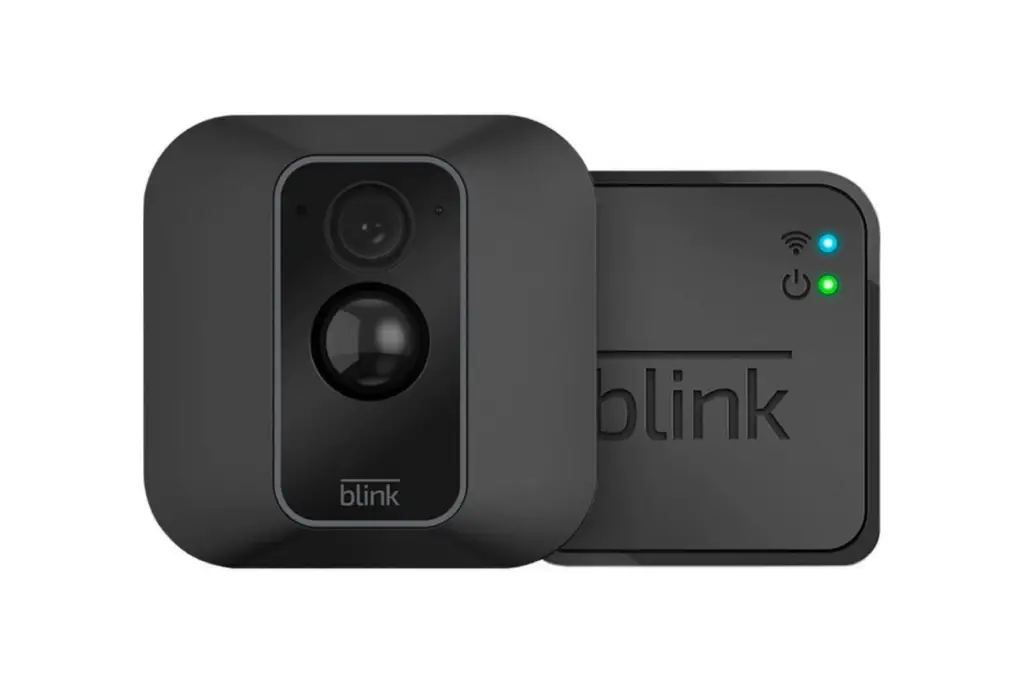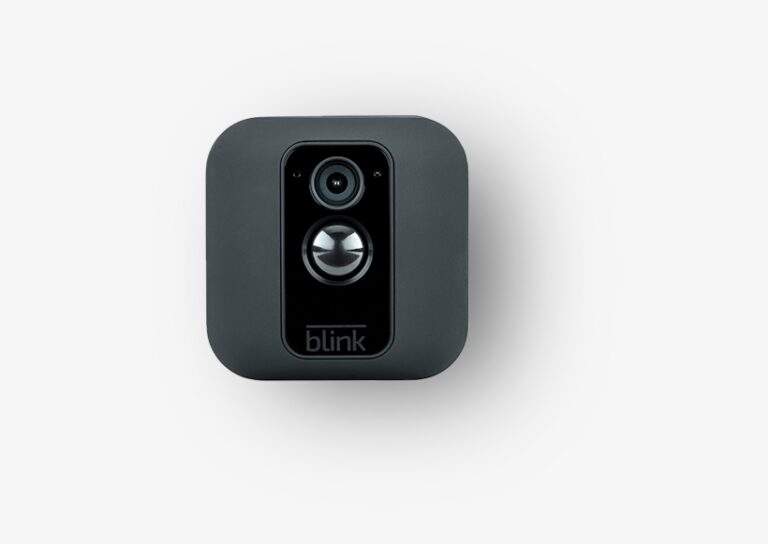Introduction
How Much Data Does Blink Camera Use: In recent years, the rise of smart home technology has revolutionized the way we monitor and secure our living spaces. Among the plethora of cutting-edge gadgets available, the Blink camera system has emerged as a popular choice for homeowners seeking a reliable and convenient home surveillance solution. As an integral component of the Internet of Things (IoT) ecosystem, Blink cameras offer the ability to remotely monitor and record activities in and around our homes, providing a sense of security and peace of mind.
Data use is a major worry for Blink camera users. Understanding device data consumption trends is crucial to avoid high data expenditures and network bottlenecks as data-driven technologies grow more prevalent. We will also examine how local versus cloud storage affects data consumption for captured footage.
Understanding Blink camera data consumption helps homeowners choose internet subscriptions, storage, and camera setups. This insight helps users combine home security and data efficiency for a smooth Blink camera experience. As we explore, we hope to teach homeowners how to use their Blink cameras to stay connected and safe in the digital age.

How much data does Blink app use?
How much data does a single clip use? A five-second motion clip with audio when quality is set to Best will use up to 750KB of data. This is important to note if you are accessing clips via a cellular network, rather than a WiFi connection.
The Blink app, developed by Amazon, is a popular home security and monitoring application. It allows users to view live video feeds from their Blink cameras, receive motion alerts, and manage various settings related to their surveillance devices. One of the crucial considerations for app users is how much data the Blink app consumes, especially for those with limited data plans or slower internet connections.
The amount of data the Blink app uses can vary depending on several factors:
Video Quality
The primary determinant of data usage is the video quality selected by the user. Higher video resolutions, such as 1080p, will consume more data compared to lower resolutions like 720p or 480p.
Live View vs. Motion Alerts
Viewing live video streams from Blink cameras consumes more data than receiving motion alerts with short video clips. Users who frequently access live feeds should be aware of the potential impact on their data usage.
Camera Settings
The number of Blink cameras and their individual settings can affect data usage. More cameras recording and transmitting video will naturally consume more data.
Frequency of Activity
If your Blink cameras frequently capture motion events, it will result in more data being used due to the continuous recording and transmitting of video clips.
Local Storage vs. Cloud Storage
If you have enabled local storage options, such as using a USB drive, it may reduce some data usage, as videos will be stored locally instead of being uploaded to the cloud.
Can I use Blink camera without internet?
Blink cameras are battery-powered and can be used as standalone devices without an internet connection. This means that you can use them to capture footage and store it locally on the camera’s internal storage. However, you will not be able to access the footage remotely or receive alerts without a Wi-Fi connection.
Blink cameras are primarily designed to work with an internet connection, and many of their features rely on online connectivity. However, there are some limited functionalities that you can use without an internet connection:
Local Storage
Blink cameras allow you to insert a USB flash drive (sold separately) into the camera’s sync module, which enables local storage of recorded clips. In this mode, the camera will still capture motion-triggered events, but the footage will be saved directly to the USB drive instead of being uploaded to the cloud. Keep in mind that without an internet connection, you won’t be able to access the videos remotely or receive alerts on your smartphone.
Motion-Activated Recording
Blink cameras can still record motion-triggered events even without an internet connection. However, as mentioned earlier, these recordings will only be stored locally on the USB drive and won’t be accessible through the app or cloud storage.
Live View Limitations
Without an internet connection, you won’t be able to access the live view feature on the Blink app. Live view requires an active internet connection to stream video footage from the camera to your smartphone.
It’s important to note that some initial setup and configuration of Blink cameras may also require an internet connection. Additionally, firmware updates and certain advanced features might necessitate online access.
What happens when Blink goes offline?
If you receive a “Camera Offline” notification that “Your Blink Mini is offline”, it means the Blink servers lost communication with the camera. This will normally fix itself when the network comes back up, or when there is less traffic on the Wi-Fi network.
When the Blink camera system goes offline, it means that the cameras are no longer connected to the internet and cannot communicate with the Blink cloud servers. Several consequences and limitations arise when the Blink system experiences an offline state:
Live View Unavailable
One of the primary effects of the Blink system going offline is the inability to access the live view feature. Live view allows users to see real-time video streams from their cameras through the Blink app or web interface. Without an internet connection, this functionality is temporarily disabled.
Motion Alerts Delayed
When the cameras are offline, they cannot send motion detection alerts to your smartphone or email as they occur. Instead, you might receive these alerts only when the cameras are back online and the recorded clips are uploaded to the cloud.
No Remote Access
With an offline Blink system, you won’t be able to remotely manage or adjust camera settings through the Blink app. Features such as enabling or disabling motion detection, changing video quality settings, or setting up schedules will not be accessible until the system reconnects to the internet.
Limited Storage Options
If you have a USB drive connected to the Blink sync module for local storage, the cameras will continue to record motion-triggered clips even when offline. However, you won’t be able to access these locally stored clips remotely until the system comes back online.
Firmware Updates Deferred
When the Blink system is offline, any pending firmware updates for the cameras or the sync module cannot be delivered and installed until the internet connection is restored.
No Cloud Backup
Blink cameras typically upload recorded clips to the cloud for secure storage. In an offline state, any new motion-triggered recordings will not be backed up to the cloud until connectivity is reestablished.
How many GB is Blink Sync Module?
The Blink Sync Module 2 can accept a USB flash drive (sized 1GB to 256 GB, sold separately) to store clips from eligible cameras in one of two ways. Eligible cameras are Blink Wired Floodlight Camera (US), Indoor (3rd Gen), Outdoor, Mini, and Video Doorbell.
The Blink Sync Module, also known as the Blink Hub or Bridge, does not have a large storage capacity in terms of gigabytes (GB). The primary function of the Blink Sync Module is to act as a central hub that connects Blink security cameras to your Wi-Fi network and the Blink cloud servers, facilitating communication and remote access through the Blink app or web interface.
The Sync Module does not store video footage from Blink cameras directly. Instead, it serves as a mediator, transmitting the camera’s motion-triggered clips to the Blink cloud for secure storage. These cloud-stored clips can then be accessed through the Blink app or website for remote viewing and playback.
The storage capacity of the Blink Sync Module is not typically specified in terms of GB, as it mainly functions as a data relay rather than a storage device. Instead, its primary purpose is to enable communication between Blink cameras and the cloud servers.
If you’re looking to increase the storage capacity of your Blink camera system, you can use a USB flash drive with compatible Blink cameras. This allows you to set up local storage for recorded clips directly on the USB drive, reducing the reliance on cloud storage and potentially saving on subscription costs.
Does Blink share your data?
For more information about cookies and how we use them, please read our Cookie Notice. Does Blink Share Your Personal Information? Information about our customers is an important part of our business and we are not in the business of selling our customers’ personal information to others.
Like most companies offering internet-connected products and services, Blink collects certain data from its users to improve their experience, provide customer support, and optimize its services. However, it is crucial to understand how Blink handles and shares your data to make informed decisions about using their products.
Here are some key points regarding Blink’s data sharing practices:
Data Collection
Blink may collect data such as device information, camera usage, app activity, and user preferences. This data helps them troubleshoot issues, enhance the app’s performance, and develop new features.
Sharing with Amazon
As Blink is an Amazon-owned company, some user data may be shared with Amazon for various purposes, including account management, customer support, and service improvement. This sharing is typically governed by Amazon’s own privacy policies.
Third-Party Service Providers
Blink may share data with third-party service providers for tasks like cloud storage, data analysis, and payment processing. These providers are contractually bound to use the data only for the specified purposes and are expected to maintain a high level of data security.
Sharing with Law Enforcement or Legal Obligations
Like most technology companies, Blink may be required to disclose user data in response to valid legal requests or to comply with applicable laws and regulations.
Data Anonymization
In some cases, Blink may aggregate and anonymize data for analytics and research purposes. This ensures that individual users cannot be identified from the shared data.

How big is Blink local storage?
Supports local video storage through the Blink Sync Module 2 on all-new Blink Outdoor, Indoor, and Mini cameras only. With 64 GB of storage view, share, and download thousands of locally stored videos from up to 10 Blink cameras by inserting the USB flash drive to your Blink Sync Module 2.
Local storage lets you store recorded video clips on the USB drive linked to the Blink Sync Module (also known as the Blink Hub or Bridge) instead of cloud storage. Remember that the Blink system’s local storage capacity is not measured in gigabytes (GB) like a hard disk or memory card.
Blink cameras save motion-triggered video clips in local storage. Cameras attached to the Blink Sync Module send clips directly to the USB drive. A camera records motion-detected clips on the USB device for later retrieval.
The camera’s video quality and duration options affect video clip size. The number of cameras, motion-triggered events, and video quality settings determine how much local storage the USB drive uses. The Blink system is designed to complement its cloud storage service, and the local storage capability is aimed to provide consumers another choice to limit their cloud storage consumption or avoid subscription expenses.
What are the typical data usage rates for a Blink Camera?
The typical data usage rates for a Blink camera can vary based on several factors, including camera settings, video quality, camera activity, and the number of cameras in use. Here are some general considerations regarding data usage for Blink cameras:
Motion-Activated Videos
Motion-activated blink cameras record brief videos. Camera settings determine the length of these clips, which are usually 5–60 seconds. Data usage is mostly from motion-activated clips.
Video Quality
Camera video quality greatly affects data usage. Video resolutions like 1080p use more data than 720p or 480p.
Camera Action
Motion frequency impacts data usage. Continual video recording and transmission will require more data if your Blink camera captures motion events.
Live View Use
Live view on the Blink app sends camera video to your smartphone, using data. Estimating data consumption should include live view usage.
Cloud storage
Blink cameras securely save motion-activated clips on the cloud. Clip frequency and duration affect cloud storage data.
Local Storage
Using a USB flash drive to save recorded clips locally reduces cloud storage and cloud upload data usage.
Unproductive Times
When not in use, blink cameras use little data.
Due to different factors affecting data usage, Blink camera data consumption rates are difficult to estimate. Monitoring your data usage over time will help you determine how much data your Blink camera system uses. You can optimize data usage by adjusting camera settings, video quality, or local storage.
Can I monitor the data usage of my Blink Cameras?
The Blink app does not have a built-in feature that allows you to directly monitor the data usage of your Blink cameras. Blink’s focus has primarily been on providing an easy-to-use home security and monitoring solution, and detailed data usage monitoring within the app has not been a standard feature.
There are several techniques to track or estimate Blink camera data usage:
Router Data Monitoring
Modern routers can track device data usage using built-in data monitoring features. Check your router’s settings or user manual for data use monitoring.
Mobile Data Use
Mobile Blink users can check app data usage through their device settings. You can track app data usage on most smartphones.
Estimating Use
Video quality, motion event frequency, and camera count help estimate Blink camera data usage. If you know the average size of motion-activated clips and the number generated each day, you may estimate daily data usage.
ISP Data Tracking
Your ISP may offer tools or online portals to track your internet data usage. This can estimate the data consumed by all network devices, including Blink cameras.
If you have data consumption concerns or want more accurate tracking, consider third-party data monitoring solutions or Blink customer support.
Conclusion
Understanding the data consumption of Blink cameras is crucial for homeowners seeking to optimize their home surveillance experience without incurring excessive data costs or encountering network issues. Throughout our investigation, we have uncovered various factors that influence the amount of data these smart cameras utilize. Lower resolution settings and frame rates reduce data consumption but may compromise video quality. Finding the right balance between data efficiency and image clarity is essential.
Motion detection sensitivity and camera activation frequency greatly increase data consumption. Adjusting these settings to meet personal needs and preferences can balance recording vital events and limiting data usage. Choosing local or cloud storage for captured footage affects data consumption. Cloud storage is convenient and accessible, but it may use more data than local storage.
Understanding data-saving tools and scheduling recording can help users with limited data plans or slower internet connections control data consumption. Blink cameras use data based on a variety of parameters, and users can customize their settings. By considering these criteria and making informed decisions, homeowners can improve their Blink camera system’s functionality and ensure home security.

